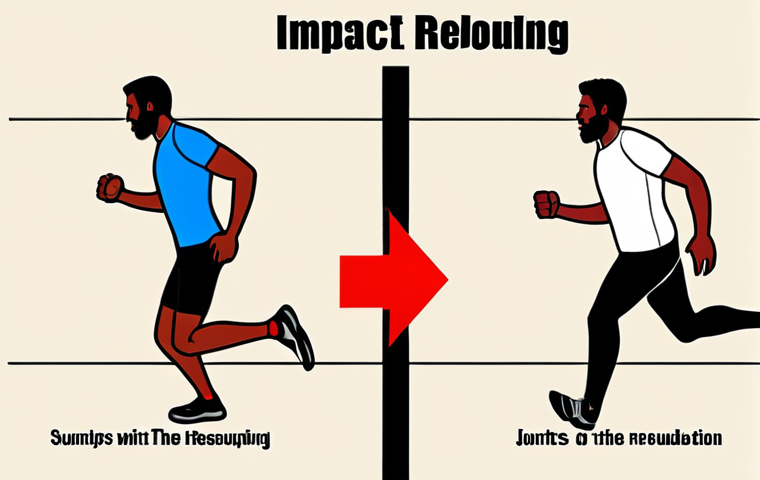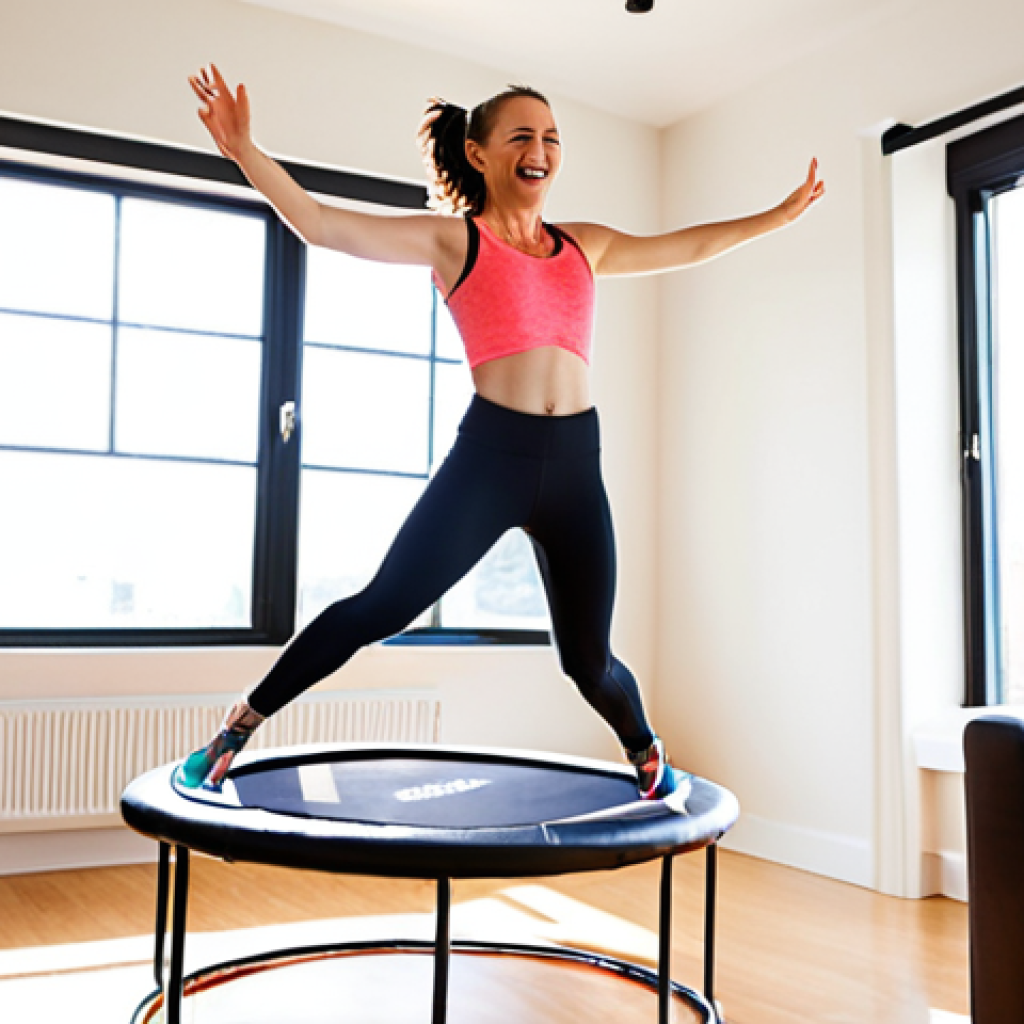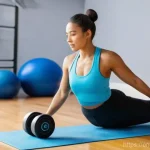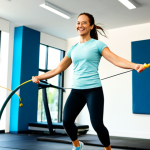Okay, here is the blog introduction you requested, formatted for an English-speaking audience:Jumping on a trampoline isn’t just child’s play; it’s a fantastic way to boost your cardiovascular health, improve balance, and burn calories without feeling like you’re stuck in a tedious workout routine.
I’ve personally found that a few minutes of bouncing each day leaves me feeling energized and surprisingly refreshed. In fact, recent trends show a surge in adult fitness routines incorporating mini-trampolines, often called rebounders, due to their low-impact nature and high effectiveness.
Looking ahead, expect to see even more sophisticated trampoline designs and workout programs tailored for various fitness levels. Let’s delve into the details to gain a comprehensive understanding!
Okay, here’s the main content of your blog post, formatted for an English-speaking audience:
Unleash Your Inner Child: The Joy of Rebounding for Adult Fitness

Trampolines aren’t just for kids anymore. As someone who initially dismissed them as a backyard toy, I was shocked to discover the incredible benefits of rebounding for adult fitness.
Forget the grueling gym sessions – bouncing on a mini-trampoline is a fun, low-impact way to get your heart pumping and your body moving. Think of it as playful exercise disguised as pure enjoyment!
Rebounding: More Than Just a Fun Bounce
Rebounding, the act of jumping on a mini-trampoline, offers a surprisingly effective full-body workout. It’s not just about bouncing up and down; it engages your core, strengthens your legs, and improves your coordination.
I was amazed at how quickly I felt the burn in my thighs and abs during my first rebounding session. Plus, the rhythmic bouncing is incredibly stress-relieving.
Low-Impact, High-Reward: Gentle on Your Joints
One of the biggest advantages of rebounding is that it’s incredibly gentle on your joints. Unlike high-impact exercises like running or jumping jacks, the trampoline absorbs a significant amount of the impact, making it ideal for people with joint pain or injuries.
As someone who struggles with occasional knee pain, I’ve found rebounding to be a fantastic way to stay active without aggravating my condition.
A Fun Alternative to Traditional Cardio
Let’s face it, traditional cardio workouts can be a drag. Rebounding, on the other hand, is so much fun that you’ll forget you’re even exercising. I often put on my favorite music and just bounce away for 20-30 minutes, and the time flies by.
It’s a great way to break up the monotony of a typical workout routine and add some excitement to your fitness regimen.
Boost Your Metabolism: Rebounding and Weight Loss
Looking to shed some pounds and rev up your metabolism? Rebounding might be just what you need. This fun and engaging exercise can help you burn calories, improve your lymphatic drainage, and boost your overall metabolic rate.
It’s a fantastic way to support your weight loss goals while having a blast.
Calories Burned: Rebounding vs. Other Exercises
You might be surprised at how many calories you can burn rebounding. Studies have shown that a 30-minute rebounding session can burn as many calories as a brisk walk or a moderate jog.
Of course, the exact number of calories burned will depend on your weight, intensity, and other factors, but rebounding is definitely an effective way to torch those extra calories.
Lymphatic Drainage: The Secret to a Healthy Metabolism
Rebounding is also known for its ability to improve lymphatic drainage. The lymphatic system is responsible for removing waste and toxins from the body, and rebounding helps to stimulate this process.
By improving lymphatic drainage, you can support a healthy metabolism and boost your overall well-being. I have noticed a significant decrease in bloating and water retention since I started rebounding regularly.
Make Rebounding a Part of Your Weight Loss Journey
If you’re looking for a fun and effective way to support your weight loss goals, rebounding is definitely worth considering. Combine it with a healthy diet and other forms of exercise for optimal results.
Start with short rebounding sessions and gradually increase the duration and intensity as you get more comfortable.
Stress Relief and Mental Well-being: The Mind-Body Connection of Rebounding
Beyond the physical benefits, rebounding can also have a profound impact on your mental well-being. The rhythmic bouncing motion is incredibly calming and stress-relieving.
It’s a great way to clear your mind, boost your mood, and improve your overall mental state.
Endorphin Release: The Natural Mood Booster
Rebounding, like other forms of exercise, triggers the release of endorphins, which have mood-boosting and pain-relieving effects. I always feel happier and more energized after a rebounding session.
It’s a fantastic way to combat stress, anxiety, and even mild depression.
Mindful Movement: Focusing on the Present Moment
Rebounding can also be a form of mindful movement. As you bounce, focus on your breath and the sensations in your body. This can help you to be more present in the moment and less caught up in your thoughts.
It’s a great way to practice mindfulness and reduce stress.
A Fun Way to De-Stress After a Long Day
After a long and stressful day, a few minutes of rebounding can work wonders. It’s a great way to release tension, clear your head, and unwind. Put on some music, close your eyes, and just bounce away your worries.
Rebounding Equipment and Safety: Choosing the Right Trampoline
Before you jump into the world of rebounding, it’s important to choose the right trampoline and prioritize safety. Not all trampolines are created equal, and it’s essential to select a model that is sturdy, well-made, and appropriate for your needs.
Mini-Trampolines vs. Full-Sized Trampolines
For rebounding, you’ll want to choose a mini-trampoline, also known as a rebounder. These are smaller and more compact than full-sized trampolines, making them ideal for indoor use.
They also tend to be more affordable and easier to store.
Key Features to Look For in a Rebounder
When choosing a rebounder, look for features like a sturdy frame, durable springs or bungees, and a non-slip surface. It’s also important to consider the weight capacity of the trampoline to ensure it can safely support your weight.
I personally prefer rebounders with bungees, as they tend to be quieter and provide a smoother bounce.
Safety Tips for Rebounding
Before you start rebounding, it’s important to warm up your muscles and stretch. Always bounce in a safe and clear area, away from furniture and other obstacles.
Start with short rebounding sessions and gradually increase the duration and intensity as you get more comfortable. If you have any underlying health conditions, consult with your doctor before starting a rebounding routine.
Integrating Rebounding into Your Daily Routine
Making rebounding a regular part of your daily routine is easier than you might think. With just a few minutes a day, you can reap the numerous physical and mental benefits of this fun and effective exercise.
Setting Realistic Goals and Sticking to Them
Start by setting realistic rebounding goals. Aim for 10-15 minutes of rebounding a few times a week, and gradually increase the duration and frequency as you get more comfortable.
It’s important to be patient and consistent, and don’t get discouraged if you miss a day or two.
Finding a Time That Works Best for You
The key to sticking to any exercise routine is to find a time that works best for you. Some people prefer to rebound in the morning to start their day with a burst of energy, while others prefer to rebound in the evening to unwind after a long day.
Experiment with different times until you find what works best for you.
Making Rebounding Fun and Engaging
To make rebounding even more enjoyable, try listening to music, watching TV, or rebounding with a friend. You can also find online rebounding classes or workout videos to keep things interesting.
The key is to find ways to make rebounding fun and engaging so that you’ll look forward to your rebounding sessions.
Tracking Your Progress and Staying Motivated
Keeping track of your rebounding progress is a great way to stay motivated and see how far you’ve come. Whether you use a fitness tracker, a journal, or a simple spreadsheet, tracking your workouts can help you to stay on track and achieve your fitness goals.
Using Fitness Trackers to Monitor Your Rebounding
Fitness trackers can be a valuable tool for monitoring your rebounding workouts. They can track your heart rate, calories burned, and even the number of jumps you’ve made.
This data can help you to see how your fitness is improving over time and to adjust your rebounding routine accordingly.
Keeping a Rebounding Journal to Document Your Experiences
Another great way to track your progress is to keep a rebounding journal. In your journal, you can document your workouts, your energy levels, and any changes you notice in your body or mood.
This can help you to identify patterns and to stay motivated as you see your progress over time.
Celebrating Your Successes and Rewarding Yourself
Don’t forget to celebrate your successes along the way. When you reach a rebounding milestone, reward yourself with something you enjoy, such as a relaxing bath, a new workout outfit, or a healthy treat.
This will help you to stay motivated and to continue making progress towards your fitness goals. Here is the table you requested:
| Exercise | Approximate Calories Burned (30 minutes) | Impact Level | Benefits |
|---|---|---|---|
| Rebounding | 150-250 | Low | Cardiovascular health, lymphatic drainage, stress relief, improved balance and coordination |
| Running | 200-350 | High | Cardiovascular health, bone strengthening, calorie burning |
| Walking | 100-150 | Low | Cardiovascular health, joint-friendly, stress relief |
| Swimming | 180-280 | Low | Full-body workout, cardiovascular health, joint-friendly |
In Conclusion
Rebounding offers a unique blend of fun and fitness that can be easily integrated into your daily routine. Whether you’re looking to boost your metabolism, relieve stress, or simply add some excitement to your workout regimen, rebounding is a fantastic option. So, why not give it a try and unleash your inner child?
Embrace the joy of bouncing and discover the many benefits that rebounding has to offer. Remember to consult with a healthcare professional before starting any new exercise program, especially if you have underlying health conditions.
Good to Know Information
1. Invest in a quality rebounder: Choose a mini-trampoline with sturdy construction and a good warranty for long-lasting use.
2. Start slow: Begin with 10-15 minute sessions and gradually increase the time and intensity as your fitness improves.
3. Listen to your body: If you experience any pain or discomfort, stop rebounding and consult with a healthcare professional.
4. Mix it up: Combine rebounding with other forms of exercise, such as walking, swimming, or yoga, for a well-rounded fitness routine.
5. Stay hydrated: Drink plenty of water before, during, and after your rebounding sessions to stay hydrated and prevent muscle cramps.
Key Takeaways
Rebounding is a low-impact exercise that’s gentle on your joints. It’s a fun way to burn calories, improve lymphatic drainage, and relieve stress. Choose the right rebounder, prioritize safety, and integrate rebounding into your daily routine for optimal results.
Frequently Asked Questions (FAQ) 📖
Q: Is jumping on a trampoline really a good workout for adults?
A: Absolutely! I was skeptical at first, picturing clumsy bounces, but rebounding is a surprisingly effective workout. It’s low-impact, so it’s easier on the joints than running, and it gets your heart rate up quickly.
I’ve personally noticed an improvement in my balance and a definite boost in my mood after just a few sessions. Plus, it’s way more fun than slogging away on a treadmill, believe me!
My friend, a physical therapist, swears by it for her patients recovering from knee injuries, too.
Q: What kind of trampoline should I buy if I want to use it for fitness?
A: This is a great question! For fitness, you’ll generally want to look for a mini-trampoline or “rebounder.” They’re smaller and more durable than the kind you’d find in a backyard.
Pay attention to the weight capacity and the type of springs or bungees – better quality materials will give you a smoother, quieter bounce. I invested in one with bungee cords after reading reviews, and it’s been much gentler on my knees than spring-based models I’ve tried.
Also, consider if you want a handle bar for extra stability, especially when you’re first starting out.
Q: Are there any safety concerns I should be aware of before I start rebounding?
A: Definitely! Safety first. Always warm up before you start bouncing to prepare your muscles.
Make sure you have enough clear space around the trampoline to avoid bumping into anything. Start slowly and gradually increase the intensity and duration of your workouts.
I personally recommend watching some instructional videos online to learn proper form. Also, listen to your body – if you feel any pain, stop immediately.
And avoid rebounding if you have any pre-existing medical conditions without consulting your doctor first. My neighbor pulled a muscle once because she jumped right into a high-intensity routine without warming up properly, so take it easy at the beginning.
📚 References
Wikipedia Encyclopedia
구글 검색 결과
구글 검색 결과
구글 검색 결과
구글 검색 결과
구글 검색 결과






